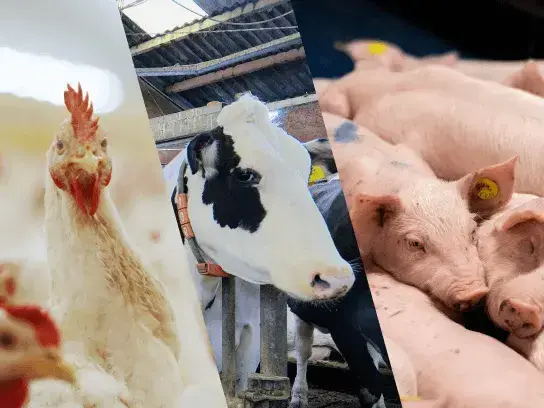- Turkey
- 2 minutes read
The trials were conducted on a turkey test farm and divided into two parts. To ensure accurate results, we measured several key factors, including feed and water consumption, bodyweight gain, feed conversion ratio (FCR), mortality rates, and butcher scores. These metrics gave us a detailed picture of how lighting impacts turkey health, behavior, and productivity throughout their growth cycle.
Trial A: CORAX Pre-Wired vs. Standard Lighting
In this trial, male turkey broilers were raised in two barns:
- one equipped with standard fluorescent lighting
- and the other fitted with CORAX Pre-Wired cold white lights. This setup allowed us to measure how HATO lighting compared to older systems in terms of productivity and animal well-being.
Trial B: Cold White vs. Warm White Lighting
Here, female turkey broilers were divided into two separate barns:
- one with CORAX Pre-Wired cold white lights
- and the other with warm white lights. This trial aimed to determine whether color temperature plays a significant role in the performance of turkeys.

The outcome:
The CORAX Pre-Wired system proved to be an essential tool in overcoming the challenges of outdated lighting setups. Its uniform illumination provided consistent conditions across the barn, reducing stress for turkeys and creating a healthier environment.
Additionally, its adjustable settings allowed us to cater to the specific needs of turkeys at various stages of growth. By reducing the number of lights required while maintaining the high light intensity needed for turkey brooding, the system also delivered significant cost savings.
Notes:
The project wasn’t without challenges:
Tight deadlines and installation hurdles provided valuable lessons about the realities of upgrading barn lighting. These experiences will help us refine our processes, ensuring smoother and more efficient installations in the future.
The data gathered during the trials not only enhanced our research but also offered valuable insights for turkey farmers. The farm owner will receive a detailed report highlighting feed and water usage, bodyweight gain, and health outcomes.
Animal welfare was prioritized throughout the project. Clear protocols were in place to address potential issues, such as equipment malfunctions or changes in turkey behavior. If necessary, barns could revert to their original lighting setup to avoid adverse impacts, ensuring the well-being of the animals at all times.

.webp)
.webp)
